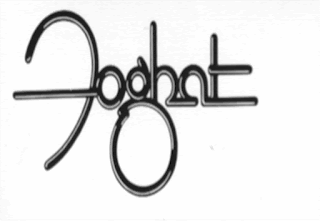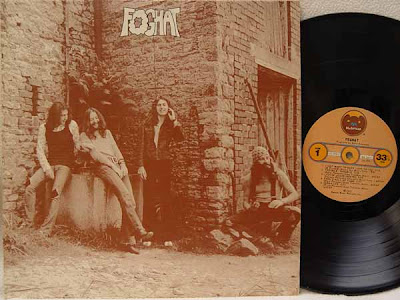(U.S 1960 - 2017)
Gary Wright is an American singer, songwriter and musician, best known for his 1976 hit songs "Dream Weaver" and "Love Is Alive", and for his role in helping establish the synthesizer as a leading instrument in rock and pop music. Wright's breakthrough album, The Dream Weaver (1975), came after he had spent seven years in London as, alternately, a member of the British heavy rock band Spooky Tooth and a solo artist on A&M Records.
Sadly Gary Wright, the musician best known for his hit singles “Dream Weaver” and “Love Is Alive,” has died (4th Sept, 2023). He was 80. This post pays tribute to a highly talented and much loved musician who brought such wonderful music to our airwaves during the 60's, 70's and 80's while playing keyboards in various groups and as a session / solo artist. His mega hit "Dream Weaver" was the song that first brought my attention to his music during my teenager years back in the 70's, and consequently sourced as much of his output that I could find or afford.

A powerfully soulful singer and a versatile keyboardist, Wright was a founding member of the U.K.-based band Spooky Tooth and was an in-demand session player from the late ’60s on, playing on all of George Harrison’s solo albums — including his epochal 1970 debut, “All Things Must Pass” — and Ringo Starr’s early singles (and, much later, with Starr’s All-Starr Band) as well as songs by Nilsson, Tim Rose, B.B. King and many others. Yet he will be best remembered for the mid-1970s hits mentioned above, which were part of a vaguely mystical, synthesizer-driven style of hit single of the era — Steve Miller’s “Fly Like an Eagle” is another example — and which saw him appearing on many music shows, wearing satin gear and rocking a keytar.
A native of New Jersey, Wright was a child actor who appeared on Broadway in a version of “Fanny.” He later decided to become a doctor and traveled to Berlin to study medicine, but continued playing with bands, including one called the New York Times. While that group was on a 1967 tour of Europe with Traffic, Wright met Chris Blackwell, founder of Traffic’s label, Island Records. The two had a mutual friend in Traffic/Rolling Stones producer Jimmy Miller, and Blackwell, impressed with the young musician’s talent, convinced him to come to London. There, Blackwell teamed him up with pianist Mike Harrison and drummer Mike Kellie and, with Wright as singer and organist, Spooky Tooth was formed.
 |
Gary Wright (Centre)
|
The band’s first two albums, “It’s All About” and 1969’s “Spooky Two,” ‘”Spooky Two,” both of which were produced by Miller and featured Wright cowriting every song, were not chart successes but created a major buzz in musicians’ circles. The members were all recruited for session work and their songs were covered by many artists, with the Three Dog Night rendering “I’ve Got Enough Heartache,” the Move performing “Sunshine Help Me” regularly and Judas Priest covering “Better by You, Better Than Me.” However, the group’s third album, “Ceremony,” was a creative misstep and Wright left the band in 1970.

He signed with A&M Records and released a strong solo album, “Extraction,” in 1970, and two players on that albums — drummer Alan White and bassist Klaus Voorman — brought Wright into the Beatles’ orbit. While Harrison was recording “All Things Must Pass” with producer Phil Spector, the latter characteristically called for more musicians. Voorman suggested Wright, who happened to be playing a different session across town — upon getting the call, Wright canceled that session and dashed over to EMI’s storied Abbey Road studios, where he began a friendship with Harrison that was to endure for the rest of their lives. He played on all of Harrison’s solo albums and multiple related projects, including Ringo Starr’s early singles “It Don’t Come Easy” and “Back Off Boogaloo”; Harrison even backed Wright during an appearance on American TV’s “Dick Cavett Show” in 1971.

The following year he reformed Spooky Tooth and released two albums while continuing to work with Harrison, with whom he shared an interest in Eastern religions; the two traveled to India together in 1974.
After the reformed group split again, Wright relocated to New York and united with power manager Dee Anthony (who managed Humble Pie and soon-to-be superstar Peter Frampton) and signed with Warner Bros. Records. His first album for the label, “The Dream Weaver” was released in 1975, and while the single was a slow builder, by the following spring it was a major hit and Wright had become a major star.
The song "Dream Weaver" was inspired by Autobiography of a Yogi, which was given to him by George Harrison. His musical association with Harrison endured until shortly before the latter’s death in 2001.The expression “Dream Weaver” was popularized by John Lennon in 1970 in his song “God“.
It was nearly two years before he followed with “The Light of Smiles,” and his subsequent efforts did not approach his previous success. His last charting single was 1981’s “Really Wanna Know You.”
In the following years, Wright specialized in instrumental and soundtrack work — although he made a surprise appearance in the 1992 film “Wayne’s World,” singing a re-recorded version of “Dream Weaver” — but he returned to more conventional rock music and issued a series of albums, with the last one, “Connected,” being released in 2010. He reformed Spooky Tooth again in 2004, and toured frequently, as a solo act and with Ringo’s All-Starr Band.
Over the years, his songs have continued to be covered — Chaka Khan recorded a blazing version of “Love Is Alive” for her 1984 smash album “I Feel for You” — and sampled by artists ranging from Jay-Z to Tone-Loc. [extract from variety.com]
This post consists of FLACs ripped from my priceless 'mint' vinyl and includes full album artwork for both vinyl and CD. My favourite tracks are the album's opener "Love Is Alive", the funky "Power Of Love" (with its powerful Stevie Wonder like riff), the beautiful "Blind Feeling" and of course his infamous "Dream Weaver". As a bonus, I have decided to include the remix of this hit, taken from the Soundtrack 'Wayne's World'.
RIP Gary Wright
Track Listing01. Love Is Alive
02. Let It Out
03. Can't Find The Judge
04. Made To Love You
05. Power Of Love
06. Dream Weaver
07. Blind Feeling
08. Much Higher
09. Feel For Me
10. Dream Weaver [Bonus 1992 Remix]
Musicians:
Gary Wright - Moog Bass, clavinet, Hammond organ, Fender Rhodes, Arp strings, Moog brass, woodwinds and special affects, Vocals
Andy Newmark and Jim Keltner - Drums
David Foster - Fender Rhodes, Hammond organ, and Arp strings
Bobby Lyle - Clavinet and Fender Rhodes
Ronnie Montrose - guitar on "Power of Love"
Backing Vocals - Lorna Wright, Betty Sweet, David Pomeranz and Gary Wright

















.jpg)






















































